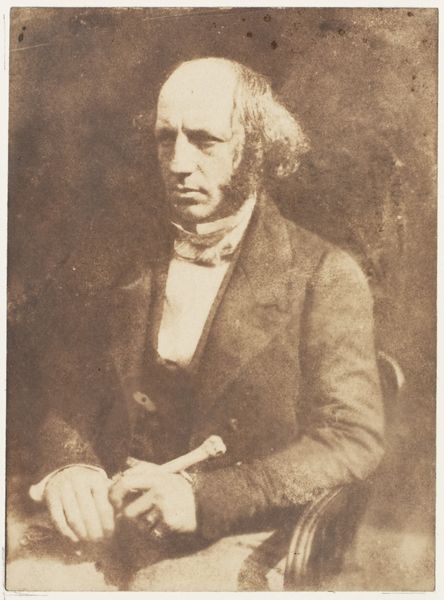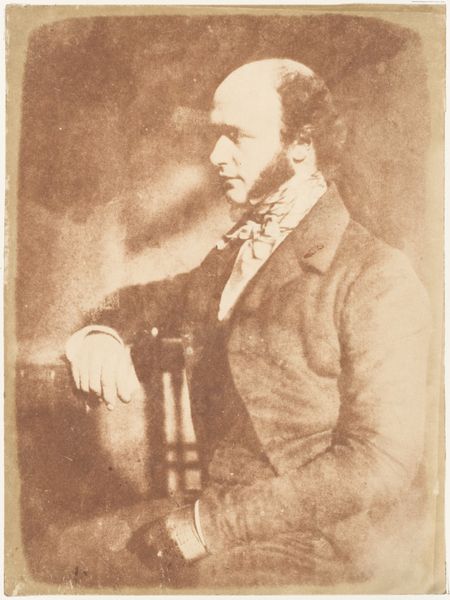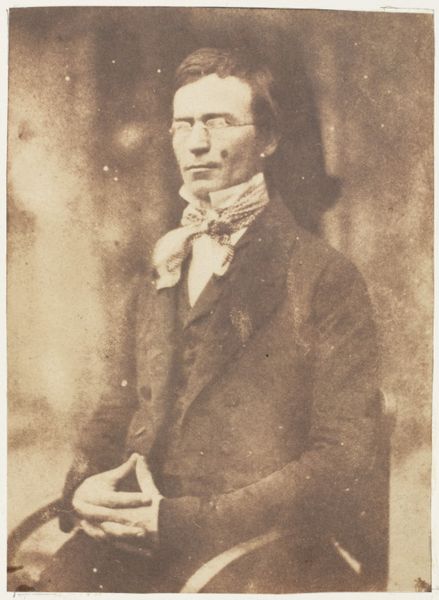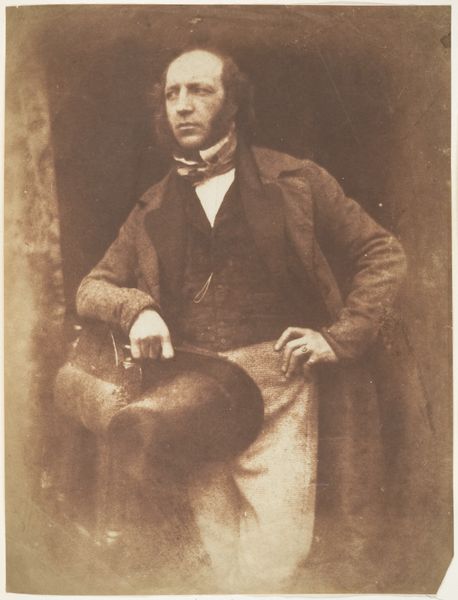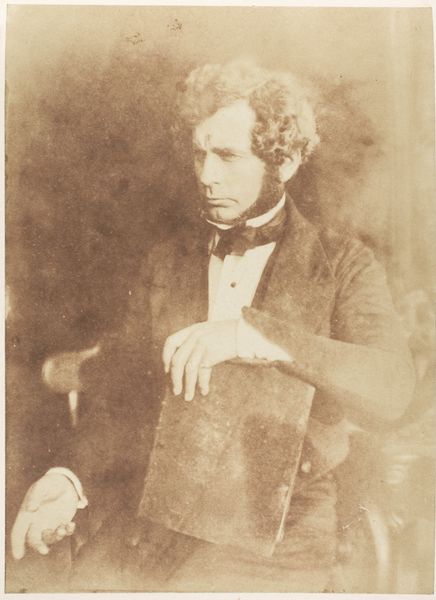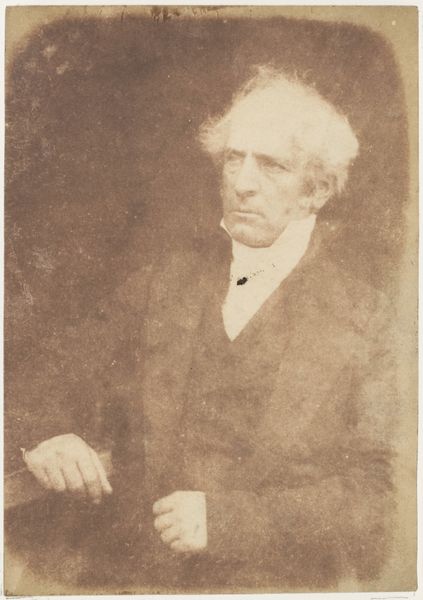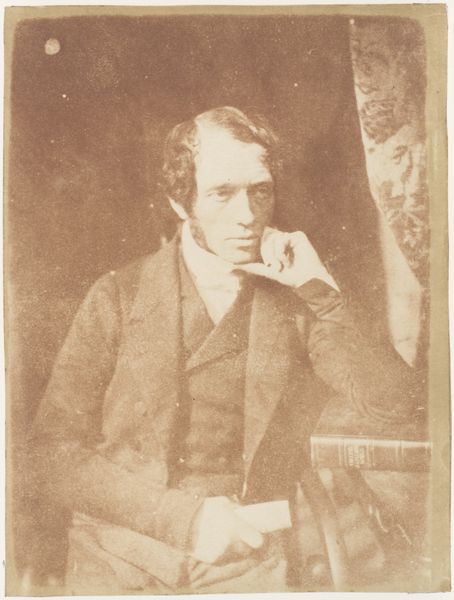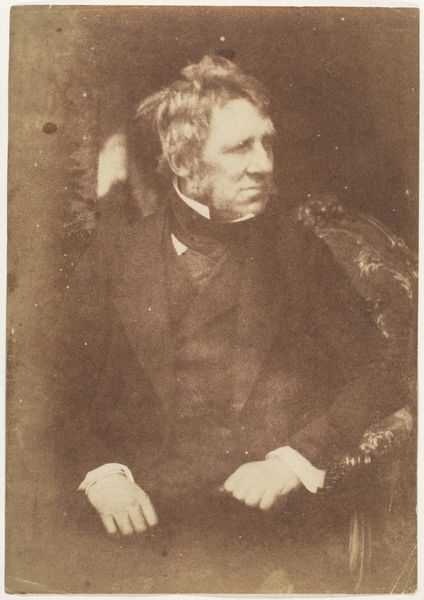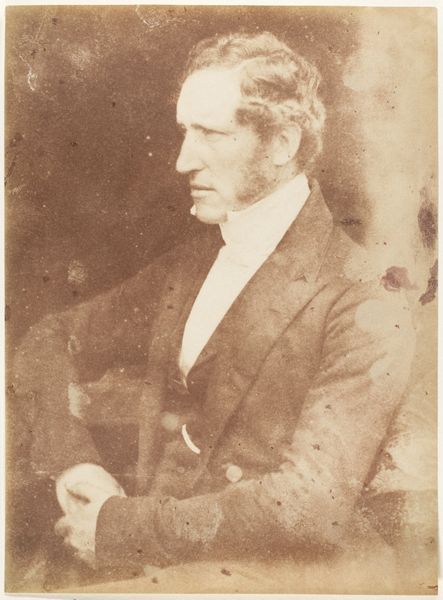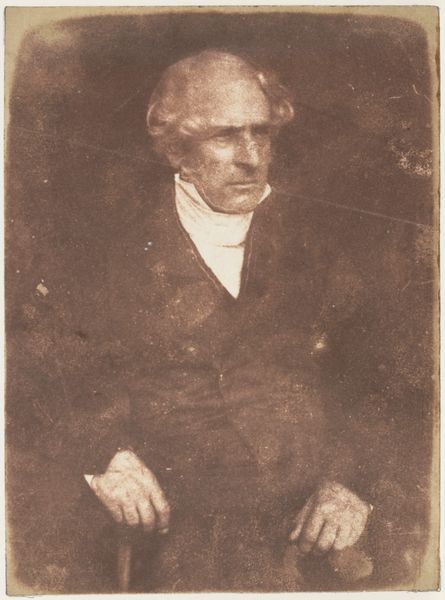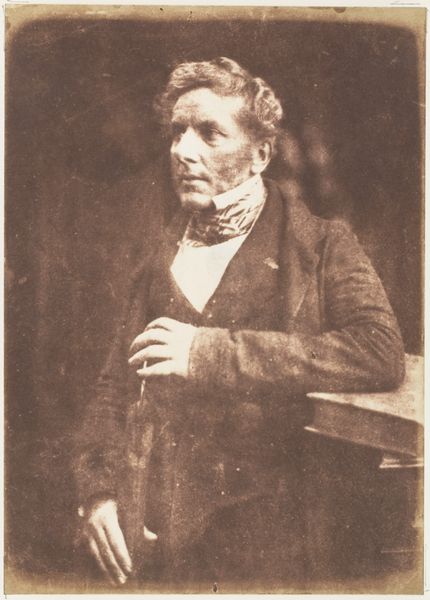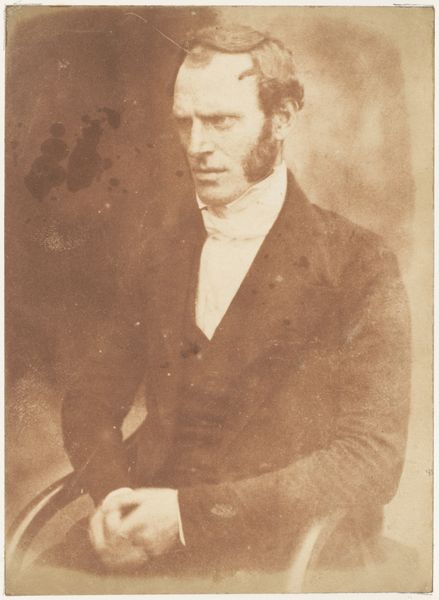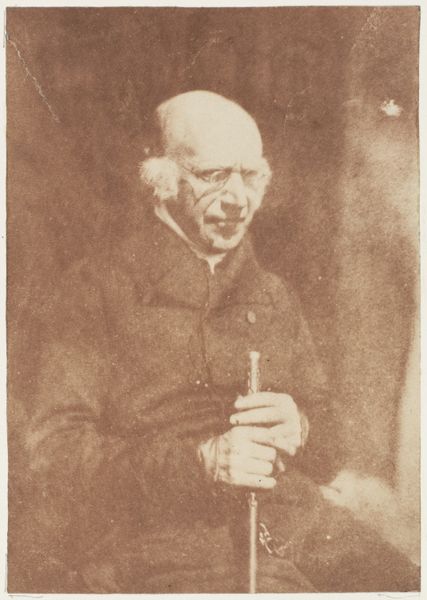
daguerreotype, photography
#
portrait
#
daguerreotype
#
photography
#
romanticism
#
men
#
portrait drawing
Copyright: Public Domain
Editor: This is "Campbell of Monzie" by Hill and Adamson, a daguerreotype dating from around 1843 to 1847. The first thing I notice is how soft and almost dreamlike the image is. It's a portrait, but it feels so different from a painting. What stands out to you? Curator: What captivates me is the interplay of light and shadow. Notice how the tonal gradations across his face and clothing articulate form without relying on sharp lines. This treatment elevates the sitter beyond a mere likeness. Editor: It almost feels like I am looking at a sketch. Can you tell me more about this effect? Curator: Yes, that visual impression speaks volumes about the artistic choices embedded in the creation of this work. Observe the graininess of the image, which serves to flatten the picture plane. The emphasis is shifted from illusionistic depth to an appreciation of surface. Editor: Interesting! It's like the photograph is calling attention to itself as an object, not just as a window onto reality. Curator: Precisely. Furthermore, the formal qualities of the daguerreotype, its unique materiality, introduce chance into the equation. Notice the subtle imperfections across the surface, and the way the image fades around the edges of the plate. Editor: I hadn't considered that! So, are you saying the flaws in the photo are actually part of what makes it so appealing? Curator: Indeed. We begin to understand this piece as something more profound. By attending to the image’s materiality and construction, we glean something of the aesthetic and historical discourse of early photography. Editor: I now understand how looking closely at composition, texture and light can help us see the choices the artist made. Thanks for this. Curator: You're most welcome. It has also opened my eyes to considering the beauty of this image.
Comments
No comments
Be the first to comment and join the conversation on the ultimate creative platform.
